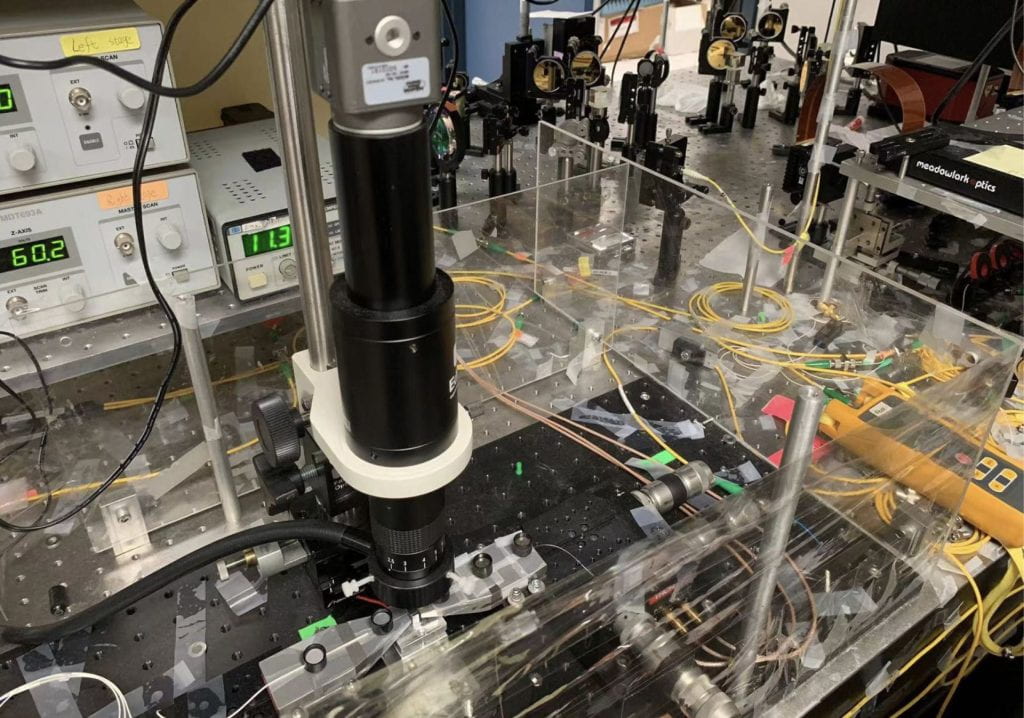Overview:
Our projects cover optical communications and relevant phenomena at various wavelengths, for fiber and free space, in linear and nonlinear regimes, and using Gaussian and structured beams. Examples include:
- structured modal beams for optical communications, such as using orbital-angular-momentum (OAM) for space-division-multiplexing to increase data capacity.
- effects of media on free-space beam propagation (e.g., atmospheric turbulence) in-ground station, drone, airplane, and underwater links.
- high-speed optical signal processing for fiber networks utilizing tapped-delay lines, linear and nonlinear optical filters, and nonlinear wave mixing.
- tunable photonic integrated circuits for the generation of spatial modes and frequency combs.
Research Highlights:

High-capacity free-space optical communications using wavelength-and mode-division-multiplexing in the mid-infrared region (K. Zou, et al., Nature Communications, 2022)

THz integrated circuit with a pixel array to multiplex two 10-Gbit/s QPSK channels each on a different OAM beam for mode-division-multiplexing (X. Su, et al., OFC Postdeadline Paper, 2022)

Pilot-assisted self-coherent free-space optical communications to improve system performance through turbulence (R. Zhang, et al., Nature Photonics, 2021)

Experiment setup to measure photonic integrated circuits and demonstrate performance in systems